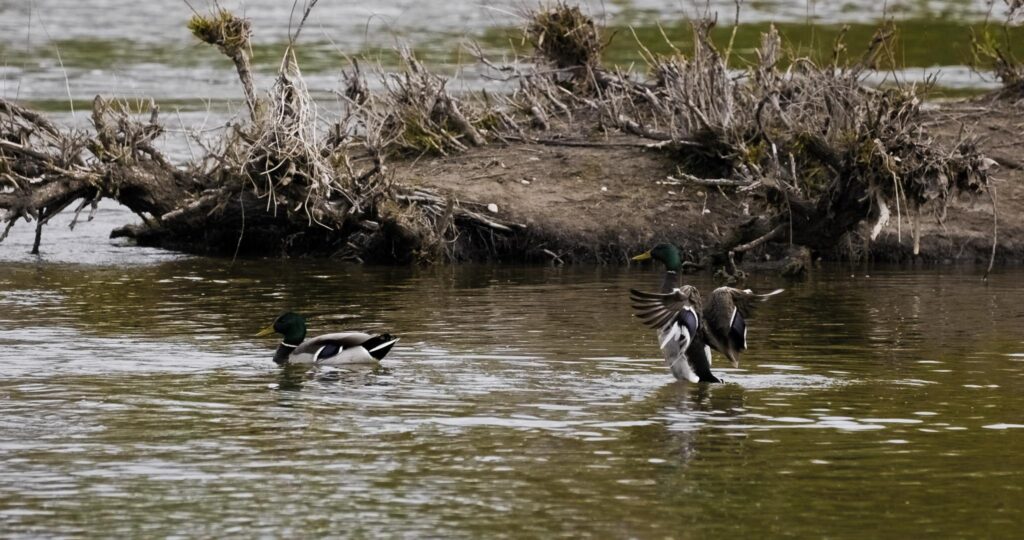I believe the most effective and cost-efficient way to hide while duck hunting on public land is to use natural materials to create a brush blind. In this article, I will teach you my favorite way to build a duck blind.
Make A Plan
Check wind direction, sun orientation, and scouting knowledge to determine the best spot to build your blind. Ideally, you will want your blind to face downwind with the sun rising behind it. You will also want to make sure that you are within shooting range of where you expect the ducks to land or fly past. I also love hunting in the shadows. If you know it will be a clear sunny morning, placing your blind on the West side of a bush or tree will cast a shadow over you and make it harder for birds to pick out any movement.

Make Sure You Aren’t Violating Any Regulations
Please read your local and state regulations before building a blind with or without natural materials. Some areas have strict regulations on where, when, and how you can or cannot build a duck blind. Do your research and pay attention because you do not want to end up with a problem with the local game warden.
Support Your Blind
Start building your new blind by creating an outline or framework made from large strong materials. This can be large pieces of driftwood arranged in a half-circle along a riverbank or it can be a bunch of sticks stuck into the mud in a circle around your marsh stool or kayak. However you start your framework make sure it will hold up as you place brushier materials on top of it to blend it in. A tip here is to utilize zip ties or twine to lash sticks together to create walls for your blind.

Make It Disappear
Brush, brush some more, then brush again. Cane, oak branches, reeds, corn stalks, and cedar limbs all make great brushing materials. You will need more than you think, so gather a bunch! I like to brush my blinds in layers starting either at the top or bottom and brushing the entire length of the blind then moving up or down to begin the next layer over top of the last. Think also about the orientation of your materials. Driftwood can be laid horizontally as that is how it is found in nature, however, reeds would look unnatural laid sideways so set these vertically around your blind.
Tips To Help You Build A Duck Blind
3D camo fabric or burlap can be used to line the inside of your brush blind. These materials are lightweight, easy to pack in, and they do a great job of blocking the birds from seeing your movements through your blind in case you didn’t gather enough brush to completely conceal yourself (we told you that you would need extra).
Most waterfowl will pass above you at some point so don’t forget about vertical cover. Tucking your blind halfway under an overhanging branch or letting some brush hang over into your shooting hole can provide you with some coverage from the sharp eyes of ducks passing over your head.
I hope you take some time this season to apply these tips in the field. I’m sure that they will help you see and take more ducks. Happy hunting and thanks for reading! If you have any other tips that can help our readers learn how to build a duck blind please leave us a comment below.

